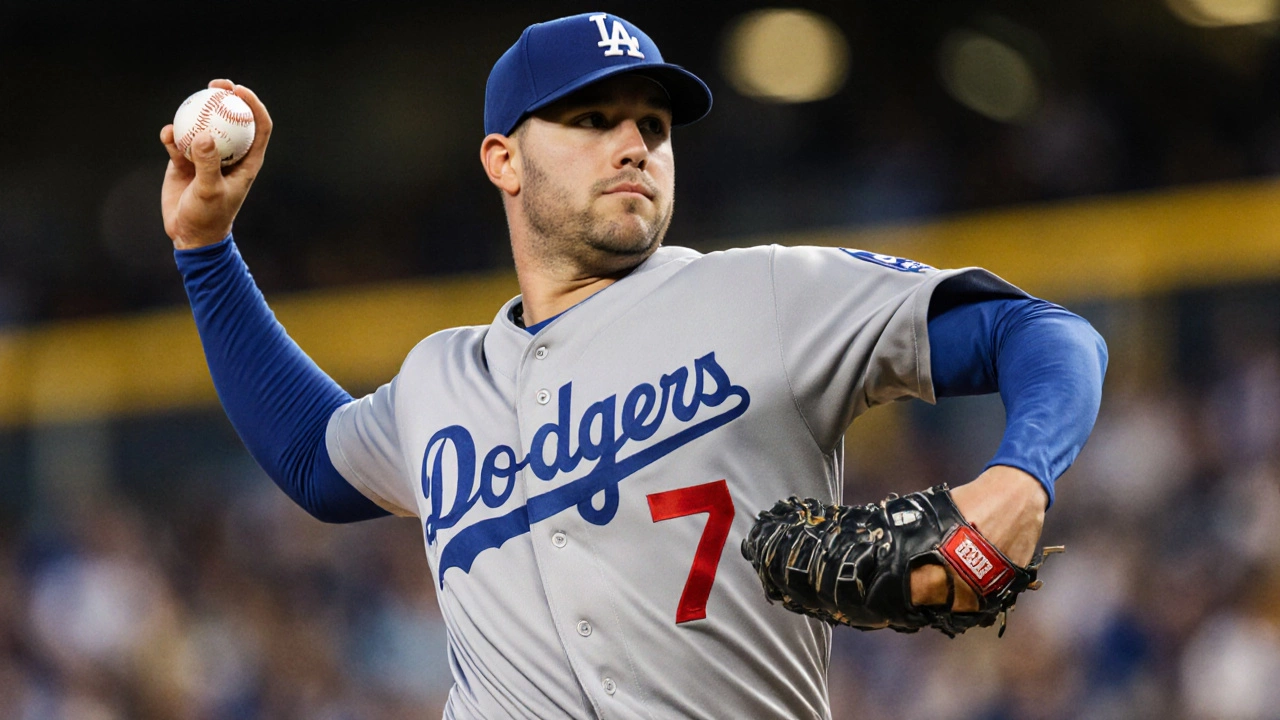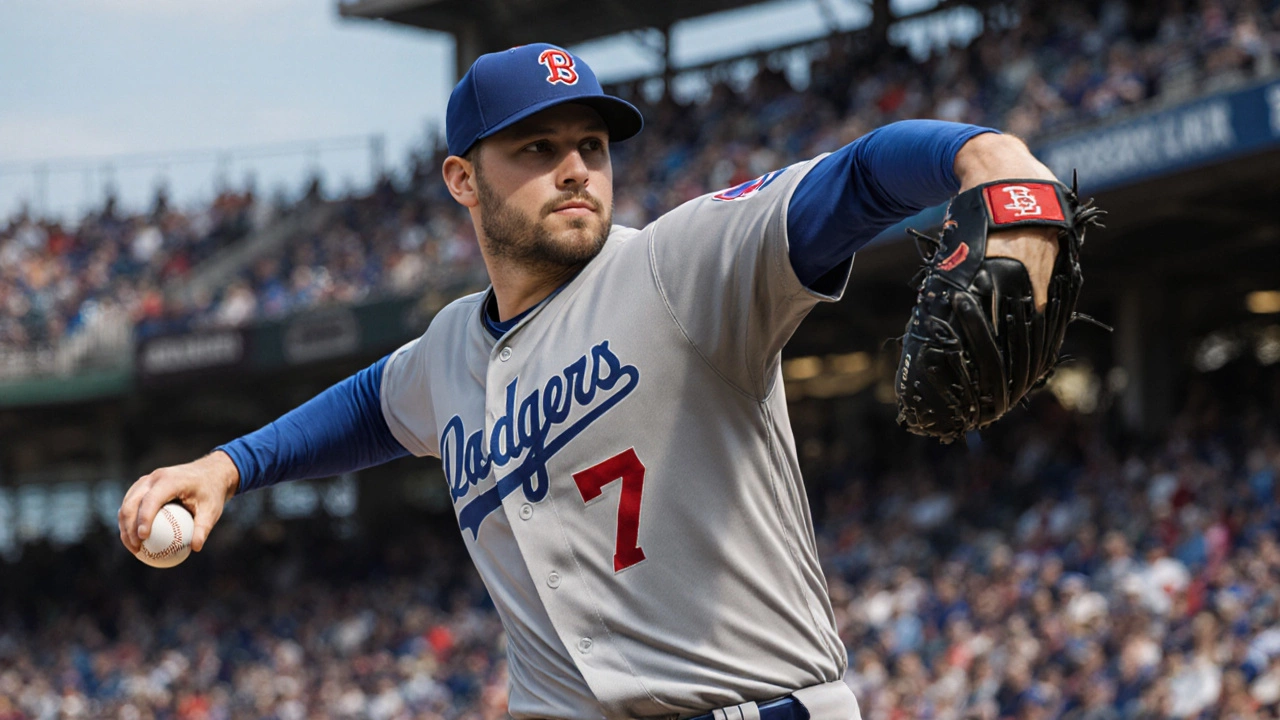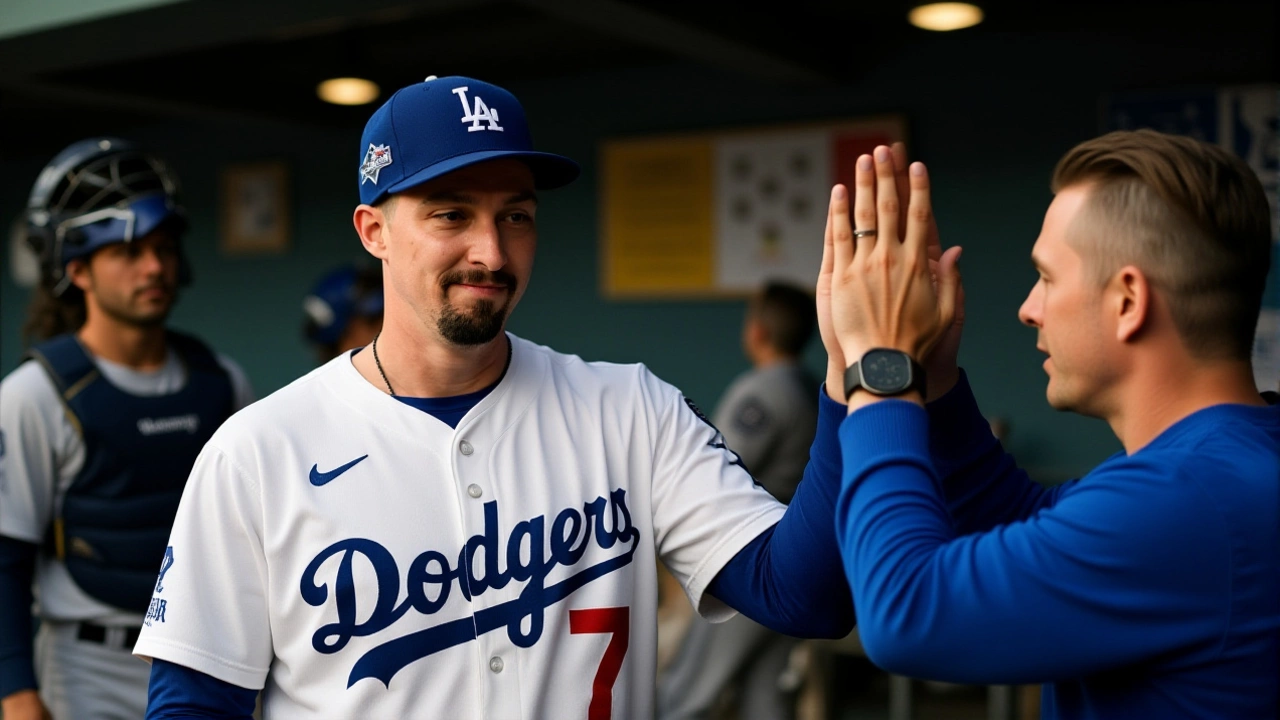When Los Angeles Dodgers announced their opening rotation for the 2025 World Series, the baseball world took notice. Dave Roberts, the team’s veteran manager, confirmed on Oct. 21 that left‑handed ace Blake Snell, left‑handed pitcher will take the ball in Game 1, while the hard‑throwing right‑hander Yoshinobu Yamamoto gets the nod for Game 2. Both starts will be at the Rogers Centre in Toronto, Canada, on Oct. 24 and Oct. 25 respectively. The decision sparks a fresh debate: can a rotation that posted a 1.40 ERA all postseason keep the Toronto Blue Jays‑led series off‑balance?
How the Dodgers' Rotation Earned the Opening Slots
Roberts didn’t just pick names out of a hat; he leaned heavily on data. In the NLCS sweep of the Milwaukee Brewers, the four‑man staff—Snell, Yamamoto, Tyler Glasnow and Shohei Ohtani—combined for a mind‑boggling 0.63 ERA over 28 2/3 innings. That set a league‑championship‑series record and gave the Dodgers a cushion heading into the Fall Classic.
But the real story lies in the consistency of Snell and Yamamoto. Snell entered the World Series having thrown three consecutive postseason outings of at least six innings with nine or more strikeouts. His most recent effort, an eight‑inning, one‑hit gem against Milwaukee on Oct. 15, featured 10 strikeouts and no walks—a line that even Pat Murphy, the Brewers’ manager of 10 years, called "the most dominant performance" he’d seen in a decade.
Snell’s Dominant NLCS Performance and What It Means
At 32, Snell is no stranger to the spotlight, yet his 2025 postseason résumé reads like a best‑of‑list. In Game 1 of the NLCS, he surrendered just a single hit while fanning ten batters, limiting Milwaukee to a .102 batting average. "I’ve always wanted to be the best pitcher in the world," Snell told reporters after that outing, a line that hints at both confidence and a little swagger.
That swagger, however, is backed by hard numbers: a 1.27 ERA across his three NLCS starts and an opposing slash line of .169/.215/.312. Those figures translate into a WHIP (walks plus hits per inning pitched) of 0.85—elite even by historical standards. For Toronto, which relies heavily on contact rather than strikeouts, Snell’s ability to induce weak ground balls could be the difference between a quick two‑run inning and a marathon that dips into the late innings.
Yamamoto’s Rise: From NPB to Postseason History
Only 26, Yamamoto burst onto the Dodgers’ radar after a stellar run with the Chiba Lotte Marines in Japan’s NPB. In 2024 he logged a 2.30 ERA over 162 innings, prompting the Dodgers to sign him to a multi‑year deal. Fast‑forward to 2025, and the Japanese ace has already thrown the first complete game of the postseason since Justin Verlander’s 2017 ALCS effort.
Yamamoto’s Game 2 NLCS triumph on Oct. 13, a 10‑strikeout masterpiece that lasted the full nine innings, underscored his stamina and precision. Through three postseason starts he’s posted a 1.83 ERA, 18 strikeouts and just four walks—a strikeout‑to‑walk ratio of 4.5. "That’s not something to be too conscious about while pitching," he said through an interpreter, emphasizing his focus on staying in the strike zone.
What makes Yamamoto especially dangerous for the Blue Jays is his ability to dominate from both sides of the plate. In the regular season he struck out 201 batters while walking a modest 59, a K/BB ratio that ranks among the top five in the majors.

The Blue Jays’ Contact‑Heavy Approach Poses a New Test
The Toronto club enters the series with an MLB‑lowest strikeout rate of 18.3% and an 81.7% contact rate—numbers that suggest a lineup built to put the ball in play and force defenses into errors. That philosophy can be a double‑edged sword: against a crew that limits hard contact, the Jays risk easy outs; against a staff that can elevate pitch velocity and movement, they risk hard‑hit balls.
Toronto’s pitching staff, led by Kevin Gausman and Chris Sale, will need to keep the Dodgers’ hitters off the sweet spot early. Yet the Blue Jays’ offensive philosophy, paired with a lineup that includes power threats like Vladimir Guerrero Jr. and speedster Jays‑born outfielder, means any misstep by Snell or Yamamoto could swing momentum fast.
Looking Ahead: Potential Series Scenarios
Game 1 will likely set the tone. If Snell can replicate his NLCS dominance—keeping the Jays under two runs and limiting baserunners—the Dodgers could seize early control. Conversely, a shaky start could hand Toronto a confidence boost that carries into Game 2.
Yamamoto’s Game 2 matchup pits a complete‑game specialist against a Blue Jays lineup that thrives on contact. Should Yamamoto ride his stamina and keep the ball low in the zone, he could force the Jays into a ground‑ball barrage that plays into the Dodgers’ defensive strengths.
Beyond the opening two games, the series shifts to Dodger Stadium for Games 3‑5. If the rotation holds the line, the Dodgers’ home‑field advantage—combined with a familiar bullpen and a raucous fan base—could prove decisive. But the Blue Jays’ ability to adapt mid‑series, perhaps by increasing pitch‑count pressure or exploiting left‑right matchups, will keep the outcome uncertain until the final out.

Key Facts
- Game 1: Blake Snell (LHP) vs. Toronto Blue Jays – Oct. 24, 2025, Rogers Centre
- Game 2: Yoshinobu Yamamoto (RHP) vs. Toronto Blue Jays – Oct. 25, 2025, Rogers Centre
- Dodgers’ starters: 1.40 ERA, .132 opponent batting average across 64 2/3 postseason innings
- Blue Jays: MLB‑lowest strikeout rate (18.3%) and highest contact rate (81.7%)
- Series format: Games 1‑2 in Toronto, Games 3‑5 in Los Angeles
Frequently Asked Questions
How might Blake Snell’s pitching style affect the Blue Jays’ contact‑heavy lineup?
Snell relies on a mix of high‑velocity fastballs and late‑breaking sliders that generate weak ground balls. Against a team that seeks to put the ball in play, his ability to keep the ball low and induce soft contact could turn many of Toronto’s usual hits into easy outs, limiting the Jays’ offensive rhythm.
What makes Yoshinobu Yamamoto a unique threat in Game 2?
Yamamoto blends Japanese precision with MLB power. His 1.83 postseason ERA and ability to throw a complete game mean he can maintain velocity deep into the ninth inning, a rare trait in today’s bullpen‑heavy era. That endurance could wear down Toronto’s hitters, especially late in the game.
Why is the Blue Jays’ low strikeout rate significant for the series?
A low strikeout rate indicates the Jays prefer to make contact, betting on fielding and speed. Against a Dodgers rotation that excels at limiting hard contact, this strategy could backfire, leading to a higher number of weak ground balls and fewer scoring opportunities.
What are the possible implications if the Dodgers lose either of the first two games?
Dropping a home‑away game would hand the Blue Jays early momentum and shift the series balance. It would also put pressure on the Dodgers’ bullpen, potentially shortening the rotation’s effectiveness once the series moves to Los Angeles.
How might the shift to Dodger Stadium for Games 3‑5 affect the series outcome?
Dodger Stadium’s spacious outfield and familiar sightlines favor power hitters like Freddie Freeman and Mookie Betts. If the Dodgers can capitalize on the home‑field advantage, they could swing the series in their favor even after an early loss.
